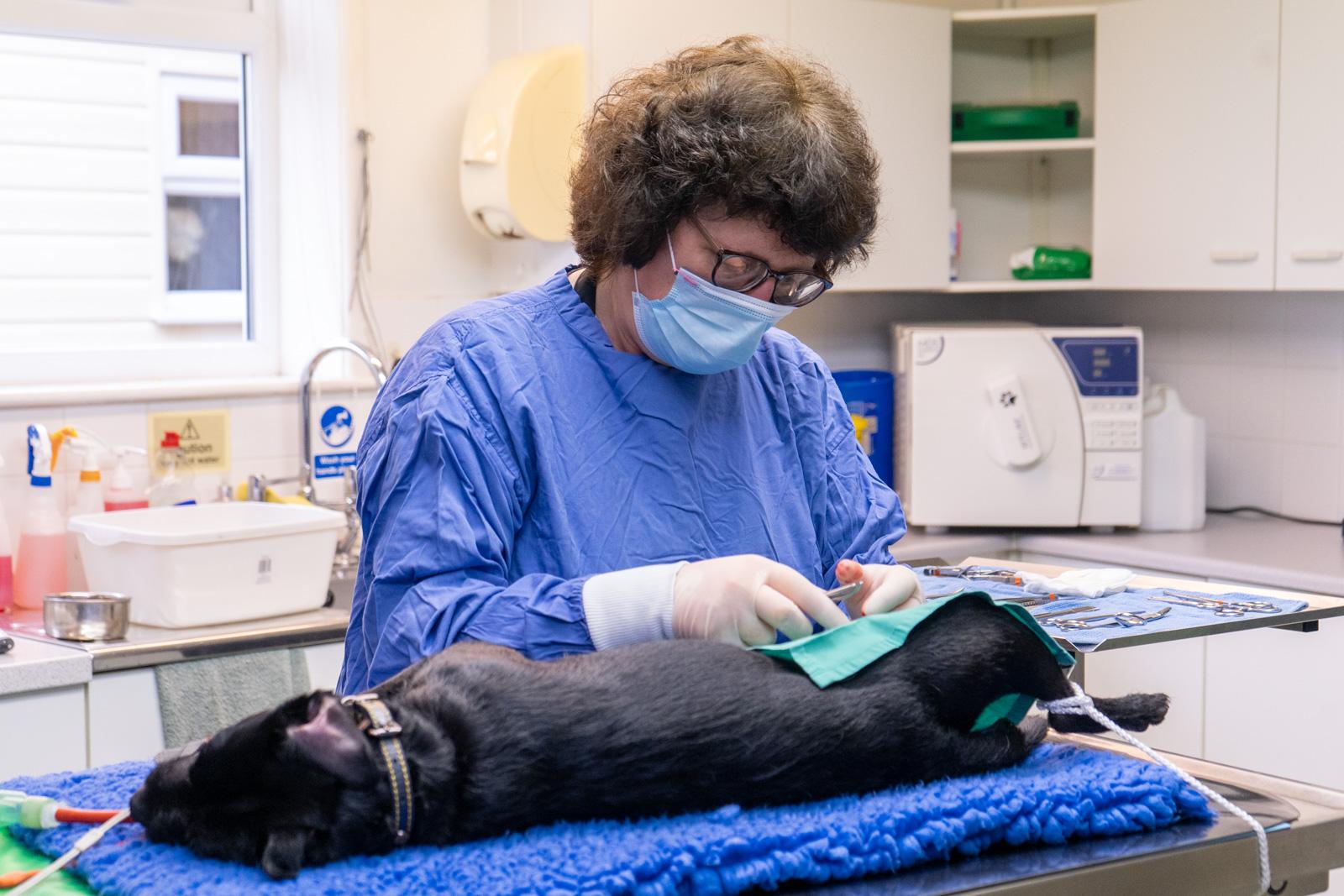Neutering
Castration and spaying for your pet, as well as advice on when and why to perform them.
Spaying
This is done to females and, in this practice, is a complete ovariohysterectomy in which we remove both ovaries and the uterus. We can spay female dogs, cats, rabbits, ferrets and guinea pigs.
Why should I spay my pet?
In all species we spay females so that they cannot have babies and, because we remove the ovaries, it also stops them coming into season.
This means that they are generally less grumpy – it’s not just humans! – that there is no mess for their owners and that they are not trying to escape and find a boyfriend.
When should my pet be spayed?
We usually spay bitches when they are young and before their first season at around six months. Please discuss this with one of our vets as some breeds and sizes of dog should be spayed later.
We can certainly do them younger than this but please check with one of the vets or nurses first. If we are operating on a bitch that has already had her first season then the timing of the spay is important, as we must operate at the time when there is the least amount of blood flowing through the uterus and ovaries.
Spays should generally be booked in four months after her season has finished, If you are unsure, please check with reception as to the best date.
Cats are also usually spayed at six months but again, may be done earlier. We prefer not to spay cats when they are calling or in season as it is a more difficult operation and could carry more risk of complications.
What does spaying involve?
It is an operation that requires the animal to be admitted for the morning, generally coming in before 10am and going home early afternoon.
Dogs and cats should be starved before their procedure, but all other species should be given food right up until they come in.
Spay procedures normally take one hour for a bitch and around 30 minutes for all other species. We can carry out laser therapy on the wound which may speed healing. Your nurse will ask you at admission if you’d like your pet to receive this.
We will give them something to eat when they wake up and then check that they can walk around before sending them home.
Pet body shirts are a new alternative to the “cones of shame” and prevent your pet from licking their wounds. They are a close fitting vest with poppers that most pets appear to tolerate wearing. Again, your admitting nurse will ask you if you would like to purchase one.
After a spaying operation
All species receive painkillers as part of their pre-med before the op and go home with a painkiller, usually in the form of Metacam or Loxicom.
Dogs must be lead walked for 10 days after their operation, and they need to be seen by the nurses at two days and 10 days after the operation.
The vets usually stitch bitches up from the inside so there are no external stitches to be seen and no stitches to be taken out.
Cat spays should be kept in on the night of the operation, so you will need litter and a tray.
They usually have a single skin stitch closing the wound which is removed at 10 days post-operation. The nurses will also see them at two days post-op to check that everything is OK.
Other species vary so we will offer you an appointment for the correct time.
Castration
This is when we remove the testicles in male animals. We castrate male dogs, cats, rabbits, ferrets and guinea pigs.
Why should I castrate my pet?
Castrating your pet means there are fewer unwanted young animals. It can also prevent some disease in later life, such as testicular cancer, prostatitis, and anal tumours, as well as behaviours such as straying.
Discuss castrating nervous dogs with your vet or nurse as it may not be the right option for them.
When should my pet be castrated?
We recommend castration in all species at around six months, though it may be possible to perform the procedure earlier if required. Some breeds of dog should be done later where possible. Please discuss with one of our vets or nurses.
Please ask at reception if you would like your pet to be castrated at a younger age.
What does castration involve?
It is an operation that requires your pet to be admitted for the morning, generally coming in before 10am and going home early afternoon.
Dogs and cats should be starved overnight before their procedure, but all other species should be given food right up until they come in.
Castration procedures normally take around 30 minutes. We will give your pet something to eat when they wake up and then check that they can walk around before sending them home.
After a castration
All species receive painkillers as part of their pre-med before the op and go home with a painkiller, usually in the form of Metacam or Loxicom.
Dogs must be lead walked for 10 days after their operation, and they need to be seen by the nurses at two days and 10 days after the operation.
The vets stitch dogs up from the inside so there are no external stitches to be seen and no stitches to be taken out.
Cat castrations should be kept in your home on the night of the operation, so you will need to provide litter and a tray. The nurses will also see them at two days post-op to check that everything is OK.


